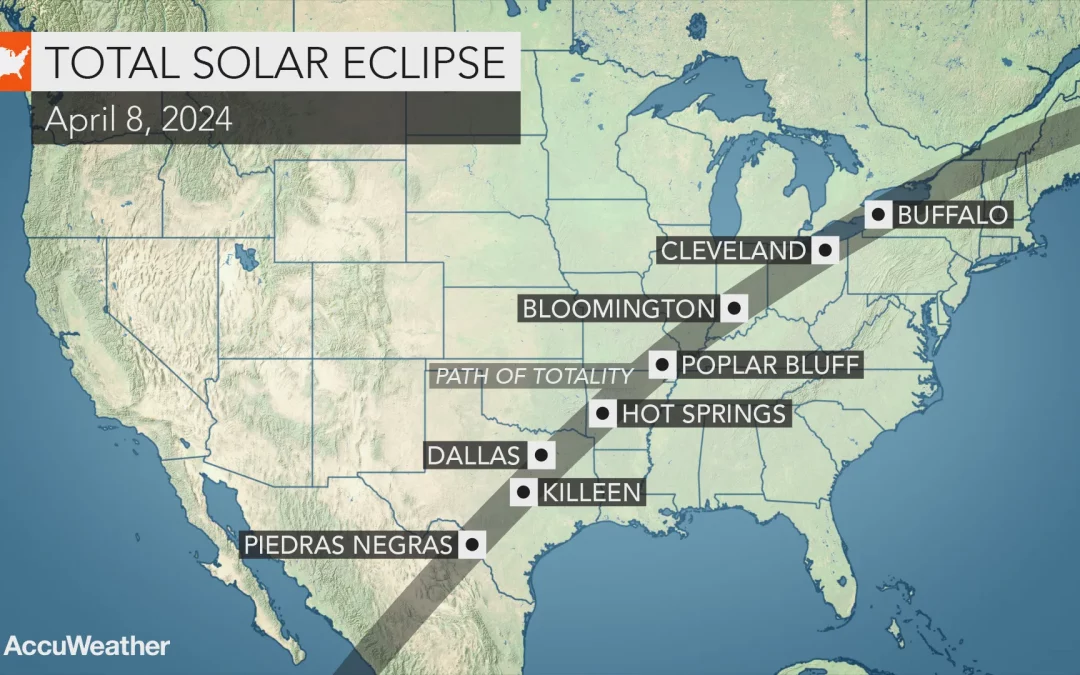The upcoming solar eclipse on April 8th, 2024, is a celestial event that promises to captivate skywatchers across North America. As the moon passes directly between the sun and Earth, it will cast a shadow, blocking a portion of the sun’s light and creating a breathtaking spectacle. However, it’s crucial to remember that the sun’s rays, even during an eclipse, are powerful enough to cause permanent eye damage if viewed directly. This safety guide outlines the essential precautions to take while observing the solar eclipse and provides resources for enjoying this astronomical phenomenon responsibly.
Understanding the Risks
The sun emits various types of light, including visible light and invisible radiation like ultraviolet (UV) rays. UV rays are particularly harmful to the eyes because they can damage the cornea and retina, potentially leading to vision loss, including blindness. The human eye lacks the ability to detect this damage, so it’s essential to take preventative measures to shield your eyes throughout the entire eclipse, regardless of the degree of totality in your location.
Safe Viewing Techniques
Looking directly at the sun, even for a brief moment, during a solar eclipse can cause severe eye injuries. Here are the only safe methods for observing the eclipse:
Solar Eclipse Glasses: These specially designed glasses feature filters that significantly reduce visible light and block harmful UV rays. Look for glasses that comply with the International Organization for Standardization (ISO) 12312-2 standard. Reputable vendors will clearly state this certification on the packaging. Avoid using any filters or sunglasses not specifically designed for solar eclipses, as they may not provide adequate protection.
Solar Projection Technique: This method involves using indirect viewing to project the sun’s image onto a safe surface. Here’s how to do it:
- Take two pieces of cardboard, one larger than the other.
- Poke a small hole (no larger than the width of a pencil) in the center of the larger piece of cardboard.
- Position the cardboard with the hole facing the sun. Hold the second cardboard a few feet behind the first one.
- The sunlight will project an inverted image of the eclipse onto the back of the second cardboard. You can safely view this image without harming your eyes.
Livestreams and Broadcasts: Numerous organizations, including NASA and local astronomy clubs, will be hosting livestreams and broadcasts of the eclipse. This is a fantastic option for those who want to experience the event without risking eye damage.
Important Precautions
Never Look Directly at the Sun: This applies throughout the entire eclipse, even during the total phase when the sun is completely obscured.
Supervise Children: Children are especially vulnerable to eye damage because their eyes are still developing. Adults must closely supervise children during the eclipse and ensure they use safe viewing methods.
Inspect Solar Eclipse Glasses: Before using eclipse glasses, carefully inspect them for any scratches or damage. Even a minor imperfection can compromise their effectiveness. Damaged glasses should be discarded.
Beware of Knockoffs: Only purchase solar eclipse glasses from reputable vendors. Look for certification markings and avoid cheap imitations that may not offer adequate protection.
Additional Tips for Enjoying the Eclipse
- Find a Safe Viewing Location: Choose an open area with a clear view of the sun. Avoid crowded places where accidental eye exposure is more likely.
- Dress for the Weather: Be prepared for the prevailing weather conditions at your location.
- Bring Extras: Pack additional eclipse glasses for friends or family members who may join you.

